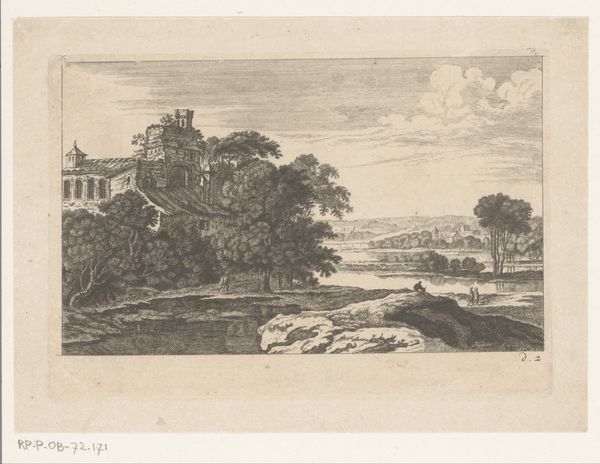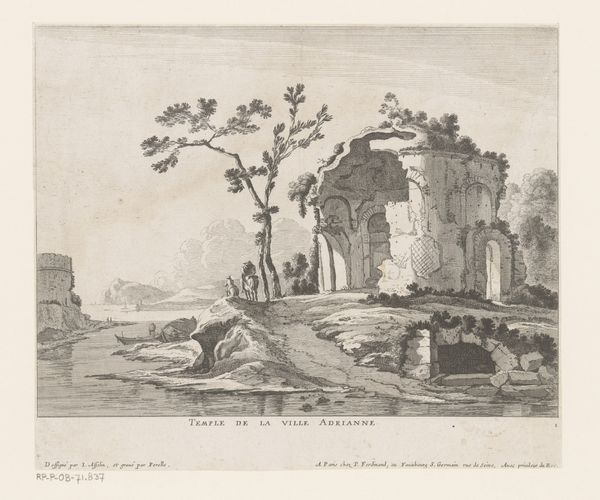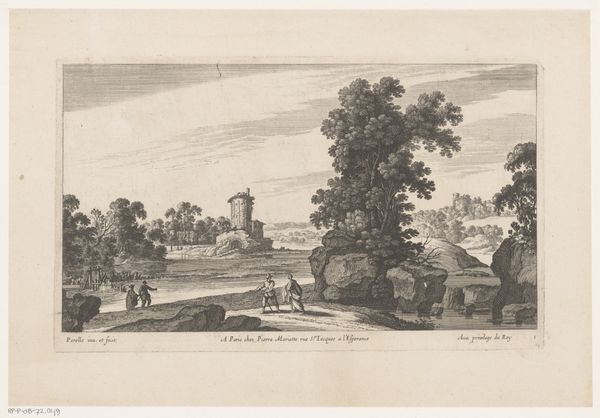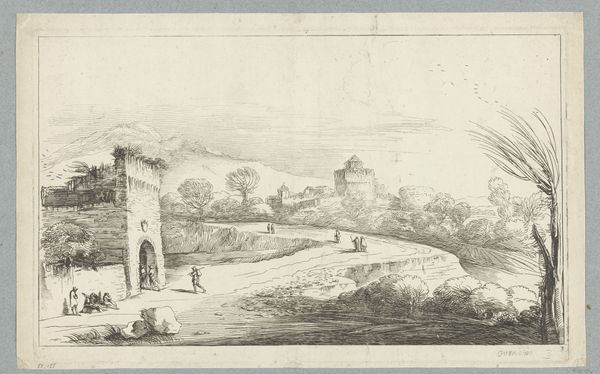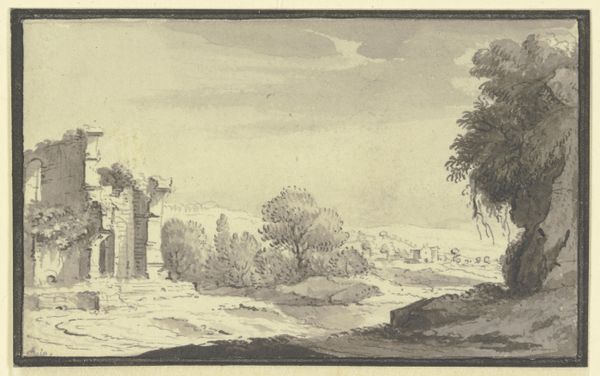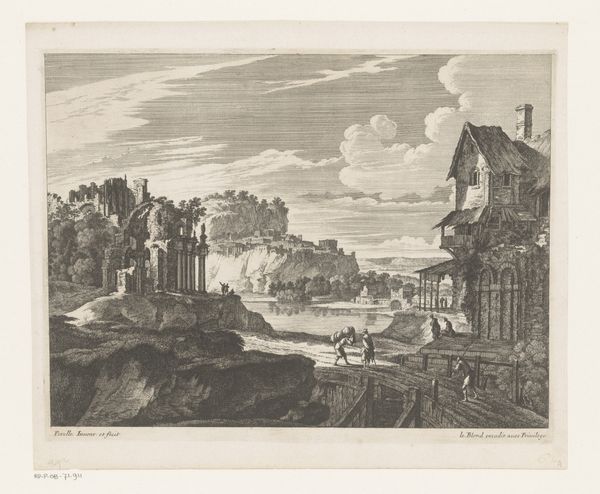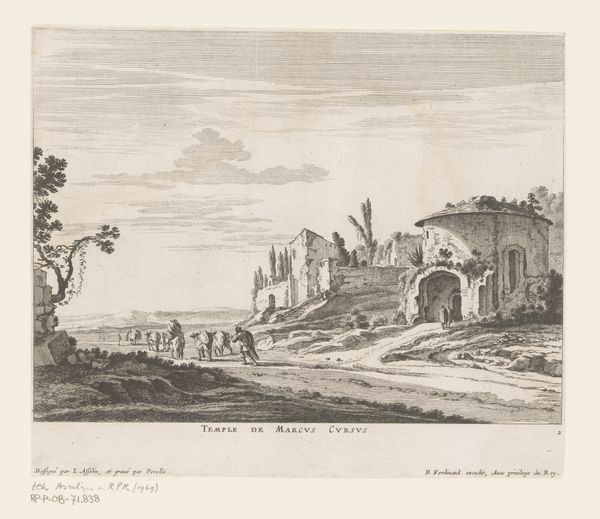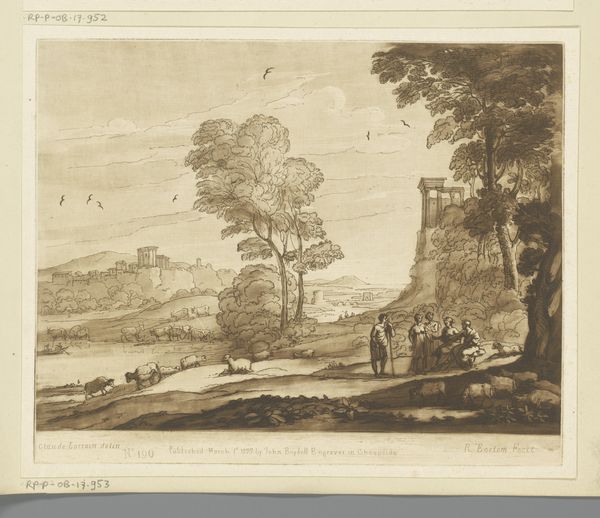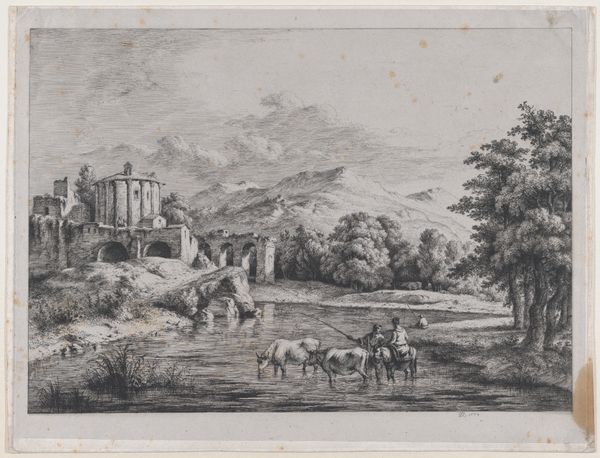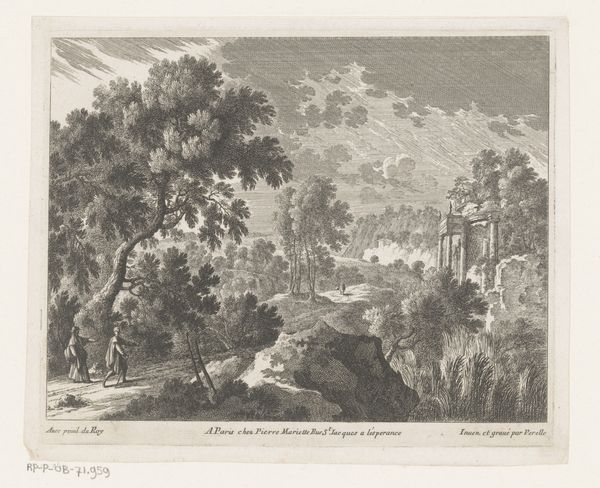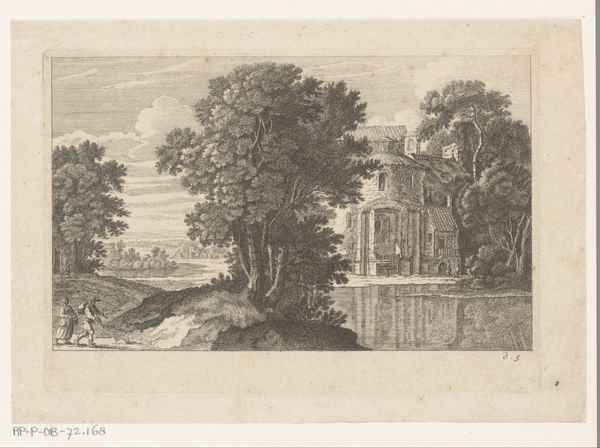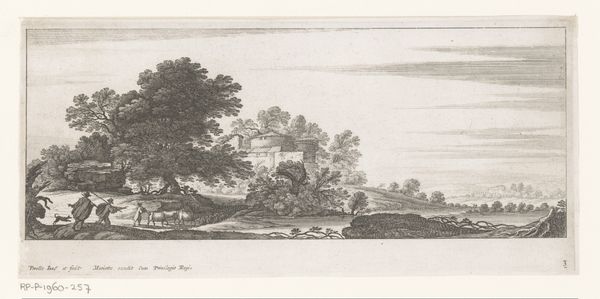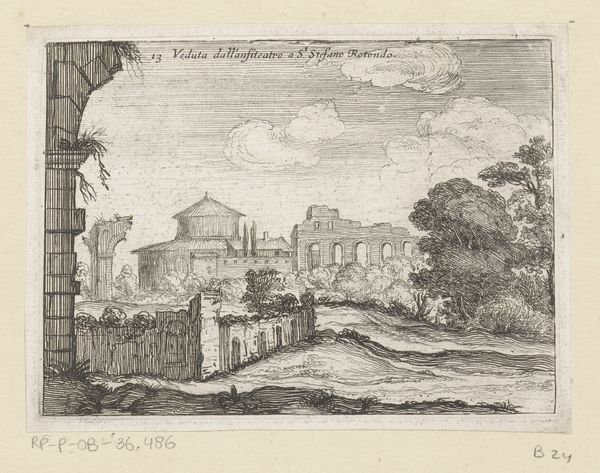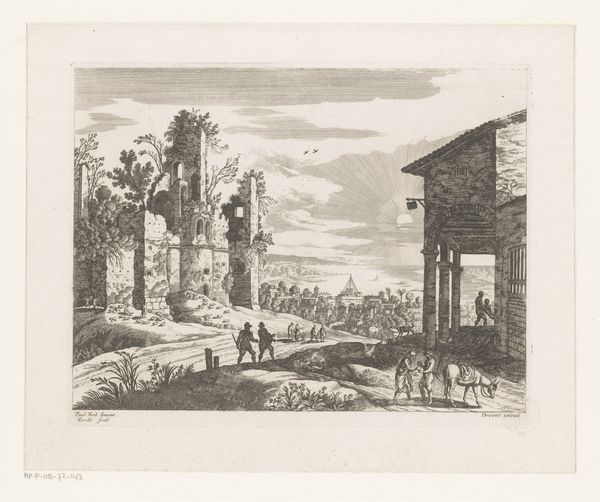
print, etching, engraving
#
baroque
# print
#
etching
#
old engraving style
#
landscape
#
classical-realism
#
perspective
#
form
#
line
#
cityscape
#
engraving
Dimensions: height 113 mm, width 250 mm
Copyright: Rijks Museum: Open Domain
Curator: So, here we have Nicolas Perelle’s etching, "Landschap met ruïne," likely created sometime between 1613 and 1657. It resides here at the Rijksmuseum. Editor: Woah. Instant melancholy. Look at that ruin dominating the scene! It's all soft lines and gentle decay; almost feels like a stage set for a quiet drama. Curator: Precisely! Consider the societal context. This interest in ruins often intersected with ideas about the fall of empires, questioning power structures. How might Perelle be engaging with that narrative? Editor: You know, the funny thing is, even in ruin, there's something deeply romantic here. The way the light catches those crumbling arches… it whispers of forgotten stories, lost loves maybe? I feel like grabbing my guitar and writing a mournful ballad. Curator: It's not merely romantic escapism, though. These romantic depictions coincided with specific European expansions, particularly colonialist. Think of the aestheticization of "exotic" lands during the same era. The composition creates a dialogue between power, decay, and maybe even the projection of a certain vision onto unfamiliar territories. Editor: Okay, yeah, I can see that. There is a whole dialogue in how these imagined or "captured" landscapes are often staged and performed to reaffirm positions of dominance or project a certain gaze, totally! Curator: Right. Perelle's technique adds to this effect. The fineness of the etching emphasizes detail but the light makes you focus on this ideal ruin; everything seems to support this aesthetic. The figures almost disappear and give an odd human scale that might reflect how fleeting power truly is! Editor: You've got me thinking… I almost want to reimagine the scene! Give the ruins a voice. What stories would they tell about the builders, the forgotten gods, or the battles witnessed? Maybe a comedy where the stones themselves are the main characters? Curator: Well, that, in itself, becomes part of the conversation, right? Engaging critically but with space for reimagining allows to question how these representations continue to permeate our modern perception of place and history. Editor: Indeed, this has totally opened my eyes… I'm off to write that rock opera about crumbling empires and sassy stones! Curator: Fantastic, perhaps art should spur us to ask uncomfortable questions about the present!
Comments
No comments
Be the first to comment and join the conversation on the ultimate creative platform.
